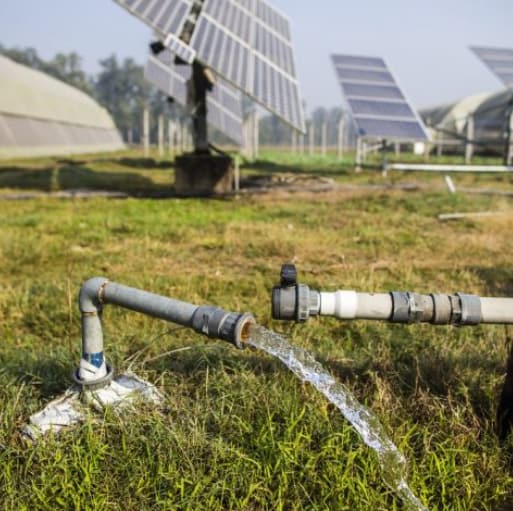Introduction: Access to clean and reliable water is essential for agriculture, irrigation, and rural communities. Traditional water pumps are often powered by fossil fuels, which can be costly, polluting, and unreliable. However, with the advancement of solar technology, solar-powered water pumps have emerged as a sustainable and efficient solution. In this article, we will introduce solar-powered water pumps and explore their benefits and applications.
- How Solar-Powered Water Pumps Work: Solar-powered water pumps utilize photovoltaic (PV) panels to convert sunlight into electricity. This electricity powers the motor that drives the water pump, providing a clean and renewable source of energy. These systems can operate in remote areas without access to the power grid, making them ideal for off-grid applications.
- Advantages of Solar-Powered Water Pumps: 2.1. Cost Savings: Solar-powered water pumps eliminate the need for fuel, reducing operating costs in the long run. Once the initial investment in solar panels and pump equipment is made, the energy from the sun is free, resulting in significant savings over time. 2.2. Environmentally Friendly: Solar-powered water pumps produce no greenhouse gas emissions during operation, contributing to a greener and more sustainable environment. 2.3. Reliability: Solar power is a reliable energy source, particularly in regions with abundant sunlight. The system can operate during the day, storing excess energy in batteries for use during cloudy periods or at night. 2.4. Low Maintenance: Solar-powered water pumps have fewer moving parts compared to traditional pumps, resulting in lower maintenance requirements and costs.
- Applications of Solar-Powered Water Pumps: 3.1. Agriculture and Irrigation: Solar-powered water pumps are widely used in agricultural settings for irrigation purposes. They can pump water from wells, rivers, or reservoirs to irrigate crops, reducing dependency on diesel or grid electricity and providing a sustainable water supply for farming. 3.2. Livestock and Remote Communities: Solar-powered water pumps can provide water for livestock in rural areas, ensuring their welfare. Additionally, these systems can be installed in remote communities, where access to electricity and clean water is limited, improving the quality of life for the residents. 3.3. Water Supply and Treatment: Solar-powered water pumps can be utilized to extract and distribute water for domestic use in off-grid areas. They can also facilitate water treatment processes, such as pumping water through filtration systems or desalination plants.
- Factors to Consider: When considering a solar-powered water pump system, several factors should be taken into account, including water requirements, pump capacity, head height, and storage options. It is essential to assess the specific needs of the application and consult with professionals to ensure the system is properly sized and designed for optimal performance.
Conclusion: The advancements in solar panel technology are driving the rapid growth and adoption of renewable energy worldwide. From high-efficiency solar cells to bifacial panels, thin-film technology, transparent solar panels, and improved durability, these innovations are making solar energy more efficient, versatile, and accessible. As technology continues to evolve, we can anticipate even more breakthroughs that will further enhance the performance and affordability of solar panels, paving the way for a cleaner and sustainable future.
